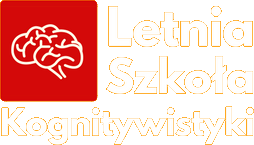 Michal Goral
Michal Goral
Cognition and Culture Health Lab
University Institute of Biomedical and Healthcare Research
University of Las Palmas de Gran Canaria
The main aim of the following article is to report experimental studies on cognitive architecture of the concept soul (alma in Spanish) and its relation to the concepts of body and mind, among the students from Industrial Engineer Department, from University of Las Palmas de Gran Canaria (Spain).
To obtain the linguistic corpus we have applied a methodological tool designed under the project C. U. D. (Body, Mind, Soul, in their acronyms in Polish) realized in our Cognition and Cultural Health Lab in collaboration with University of Lublin (Poland). Once obtain, the corpus was analyzed by Cognitive Idealized Models, the emergent paradigm proposed by Lakoff and Johnson (1980; 1999).
The concept of soul, and its relation to the body and mind concepts, are the core of “ontological mind set”, the universal cognitive mechanism of one’s own identity. Among all human cultures and all over the world, people seem to define their identity partially referring to these three concepts, constructing what we will call “folk anthropology”. The differences in this construal, among the diverse human groups and cultures, is a main goal of the C. U. D. project.
KEYWORDS
Cognitive Science, Cognitive Models, Biocultural Dinamics, Soul,
REFERENCES
- Brehmer, J. (2010). “Pojęcie duszy w naukach kognitywnych” in: Filozofia Chrześcijańska, tom 7, Uniwersytet Adama Mickiewicza, Poznan:37-63
- Lakoff, G. & Johnson, M. (1980). Metaphors We Live by. Chicago: University of Chicago Press.
- Lakoff, G. & Johnson, M. (1999). Philosophy in the Flesh: The Embodied Mind and Its Challenge to Western Thought. New York: Basic Books.
- Piasecka, A. (2008) “Dusza w Kulturze”, in: Acta Universitatis Lodzeinsis. Folia Lingüística Rossica 4: 119-134.
- Štrkalj Despot, K. Skrynnikova, I & Ostatni Olszewska, J. (2012) “Cross-linguistic Analysis of Metaphorical Conceptions of ðyɯa/dusza/duša (’soul’) in Slavic Languages (Russian, Polish, and Croatian)”, in: Proceedings of the Annual Meeting of the Berkeley Linguistics Society 38: 465-480.
